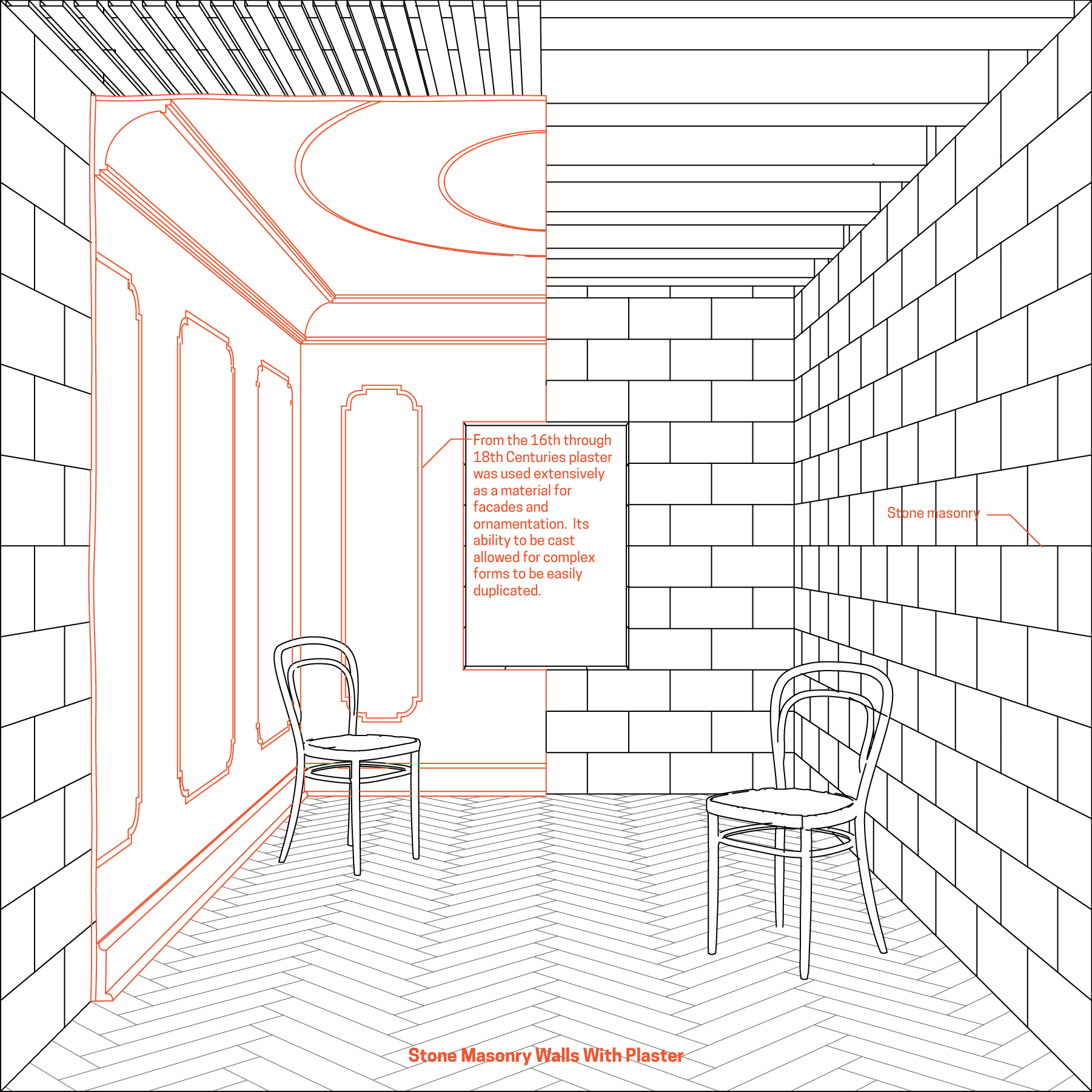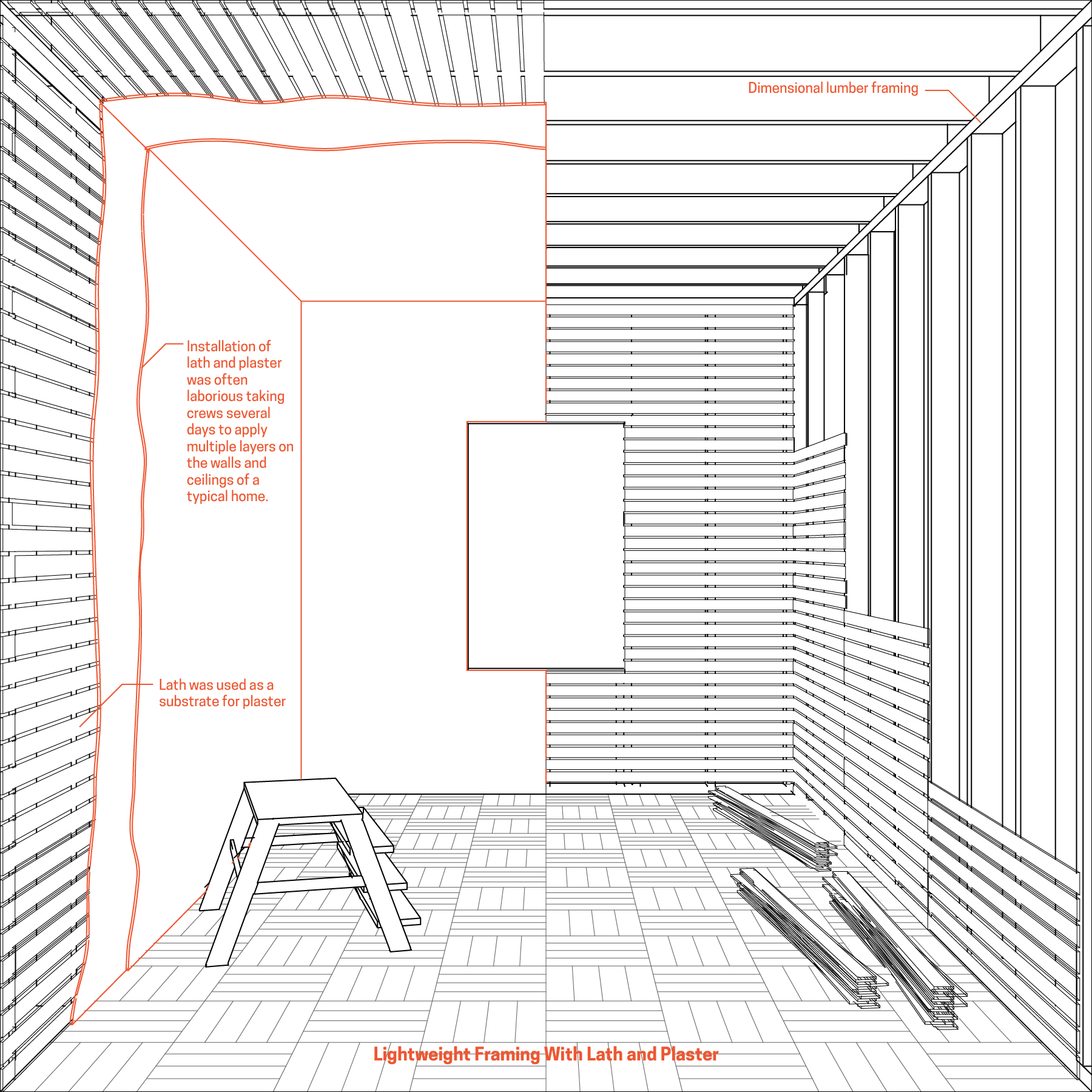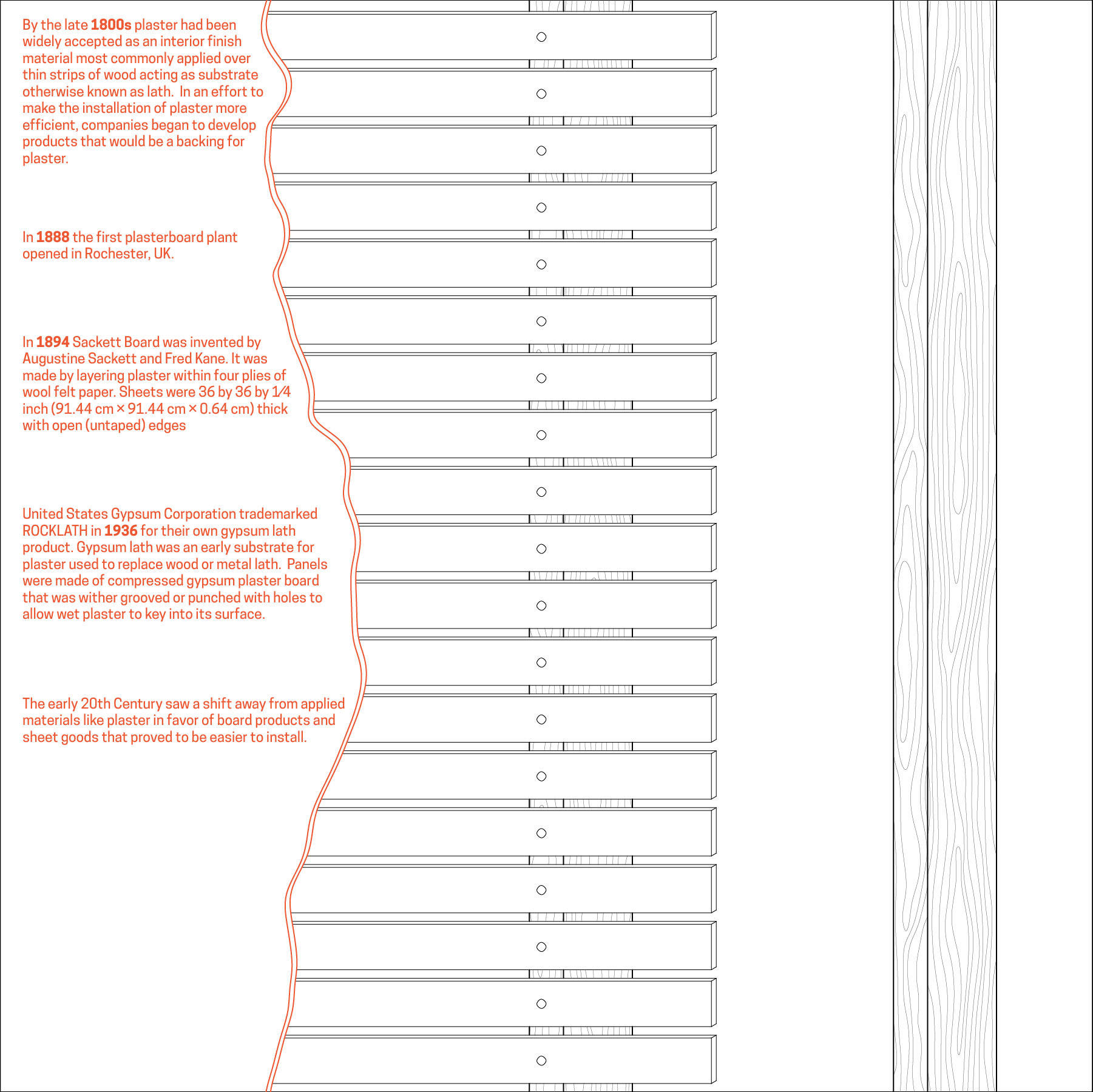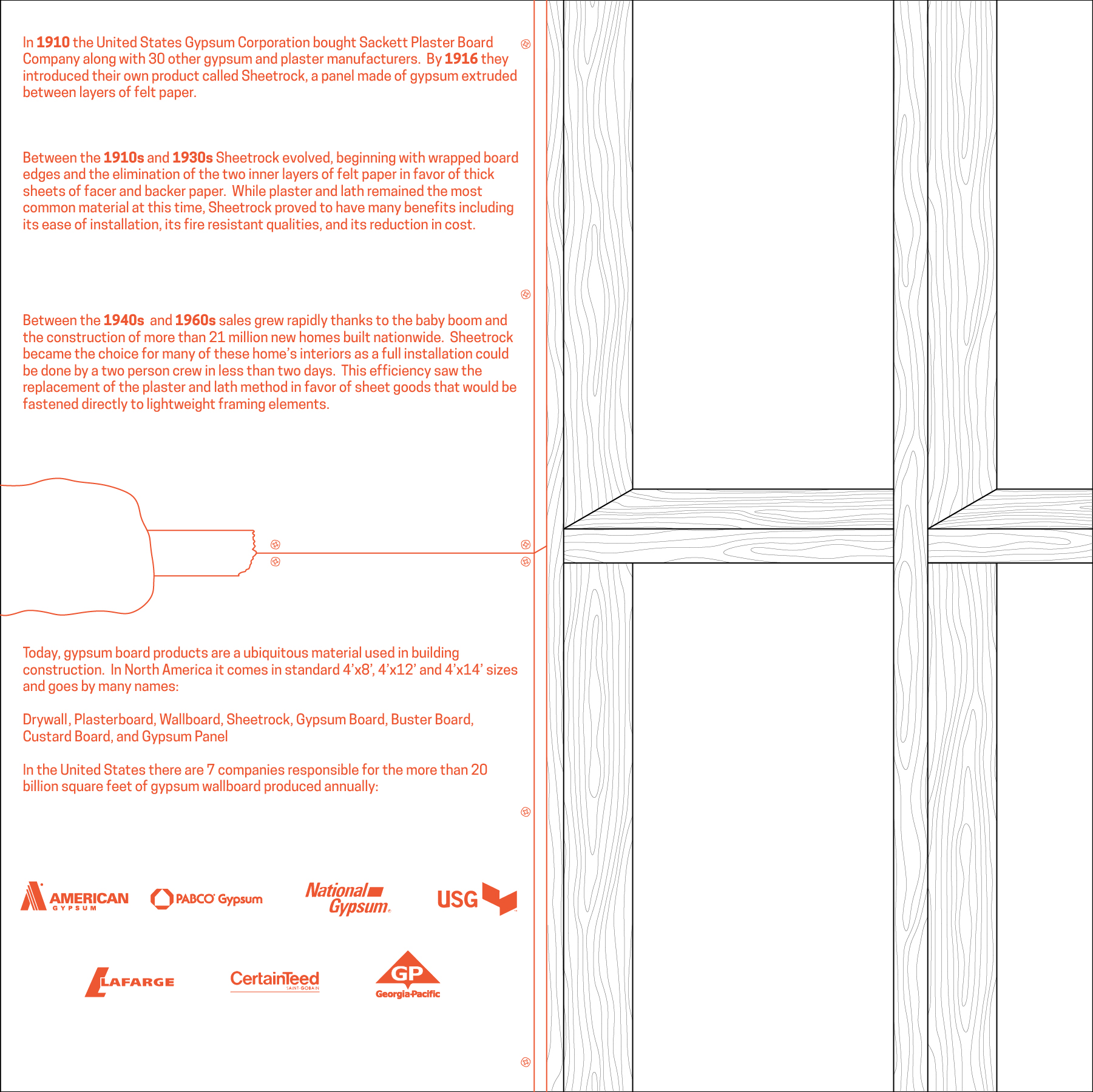A Brief History of
Drywall
Fall 2020 // University of Michigan
Professor: Julia McMorrough
Thesis Research
Gypsum wallboard, better known as drywall, is one of the most common building materials in use today. Its original use as an interior finish dates back to 3000 B.C.E. when the Egyptians and later the Romans would mine gypsum (calcium sulfate dihydrate) and one of its varieties called alabaster to burn over an open fire to make plaster. The material has since evolved as a building product through use in plaster formwork, lath and plaster application, or sheet good products. In the United States there are seven companies responsible for gypsum wallboard manufacturing who together make more than 20 billion square feet of it annually. This brief history desicribes how the material has become so ubiquitous and suggests how we might be able to rethink the interior finishes of buildings.










